#medieval art
Text
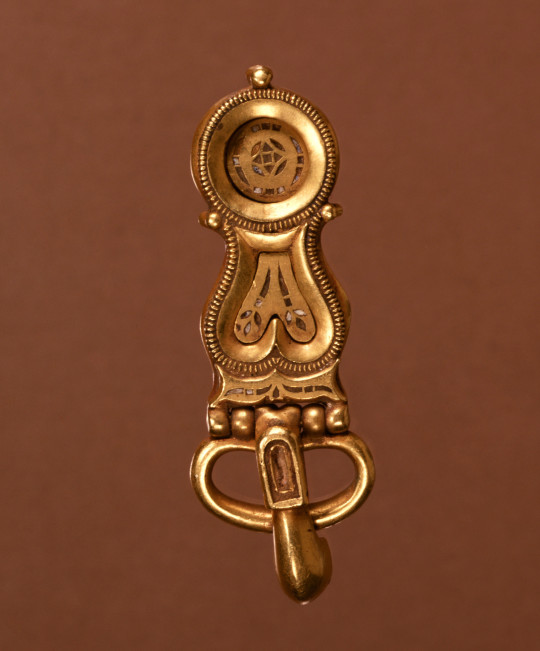
Gold belt buckle, Byzantine, 6th-7th century AD
from The Walters Art Museum
101 notes
·
View notes
Text

Incipit of the Gospel of Luke (Quoniam quidem multi...), fol. 188r from the Book of Kells, created in an Irish or Scottish monastery ca. 800. Now in the Library of Trinity College, Dublin.
#art#art history#Book of Kells#Irish art#Celtic art#illuminated manuscript#Gospel of Luke#incipit#medieval art#9th century art#Trinity College Dublin
140 notes
·
View notes
Text


Medieval Monsters is a brand new zine I’ll be releasing online THIS SATURDAY!
It’s all black and white ink illustrations made in a style that is (hopefully) a mesh between traditional art of the times but with some of my flavour flav 😏
#zine#zines#art zine#art book#illustration#art#drawing#etsy#creative#illustrator#painting#ink#handmade#medieval#medieval art#pen and ink#etching
78 notes
·
View notes
Text
Awwww YEAH!

37 notes
·
View notes
Text
I was partying while you were studying the blade, and now look who's got a crossbow bolt through the gorget of his overpriced armor

first try at another style instead of doing the usual color blocks; very happy with the results

drawn from the image below

#ink stamps#linoprinting#handmade#linocarving#linoprint#blockprint#printmaking#stamps#engraving#linocut#medieval art#medieval#crossbow#crossbowman#knave#knavish2thecore
40 notes
·
View notes
Text

"Queen Alysanne arrived in winterfell for a royal progress in 58 AC, Received by Lord Alaric Stark"
.
.
.
art ; William brassey hole, The Landing Of St. Margaret at Queensferry AD 1068.
#housetargaryen#asoiafman#asoiaf#asoiafwomensource#art#the landing of st. Margaret at Queensferry#fireandblood#house of the dragon#game of thrones#house targaryen#targaryen#george rr martin#queen alysanne#alysanne and alaric#alysanne targaryen#good queen alysanne#winter is coming#winterfell#house stark#alaric stark#jaehaerys i targaryen#art illustration#medieval#medieval art#medieval lady#saint Margaret
32 notes
·
View notes
Text

#ai artwork#ai generated#ai girl#ai image#ai art#fantasy art#ai artist#fantasy#ai sexy#ai babe#ai created art#ai art gallery#ai art generator#ai#sexy content#sexy fantasy#fantasy character#fantasy original character#dnd art#knight#medieval art#medieval#darkfantasy#castle#sword#sword and sorcery#painting style
18 notes
·
View notes
Text

guy sitting by a fire
in a manuscript of jean de wavrin's "anciennes chroniques d'angleterre", flanders, c. 1470-90
source: Paris, BnF, Français 75, fol. 198r
17K notes
·
View notes
Text

Everyone liked the color charts I test printed for Basilisk so much, I felt compelled made a nice version! Great for anyone that has an interest in Risograph printing, historical pigments, or weird medieval marginalia.
(buy it here)
#Basilisk is in the process of restocking FYI for anyone that wants both :)#risograph#color chart#medieval#marginalia#medieval manuscripts#medieval art#illuminated manuscript#printmaking#monsters
13K notes
·
View notes
Text
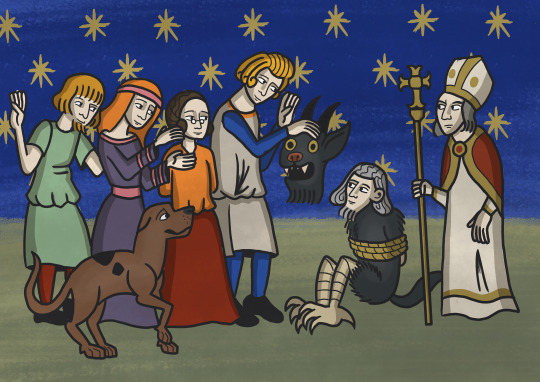
Medieval Scooby
71K notes
·
View notes
Text
Medieval Scorpions Effortpost
So yesterday I reblogged this post featuring an 11th-century depiction of the Apocalypse Locusts from Revelations, noting the following incongruity as another medieval scorpion issue:
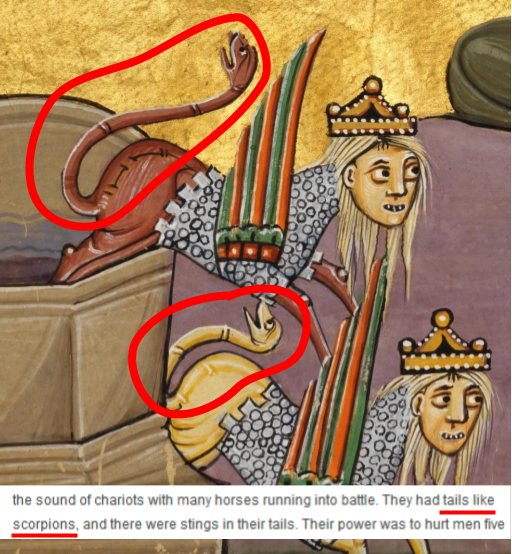
The artist, as you can see, has interpreted "tails like scorpions" as meaning "glue cheerful-looking snakes to their butts".
Anyway, it occurred to me that the medieval scorpion thing might not be as widely known as I think it is, and that Tumblr would probably enjoy knowing about it if it isn't known already. So, finding myself unable to focus on the research I'm supposed to be doing, I decided to write about this instead. I'll just go ahead and put a cut here.
As we can see in the image above, at least one artist out there thought a "scorpion" was a type of snake. Which makes it difficult to draw "tails like scorpions", because a snake's tail is not that distinctive or menacing (maybe rattlesnakes, but they don't have those outside the Americas). So they interpreted "tails like scorpions" as "the tail looks like a whole snake complete with head".
Let me tell you. This is not a problem unique to this illustration.
See, people throughout medieval Europe were aware of scorpions. As just alluded to, they are mentioned in the Bible, and if the people producing manuscripts in medieval Europe knew one thing, it was Stuff In Bible. They're also in the Zodiac, which medieval Europe had inherited through classical sources. However, let's take a look at this map:
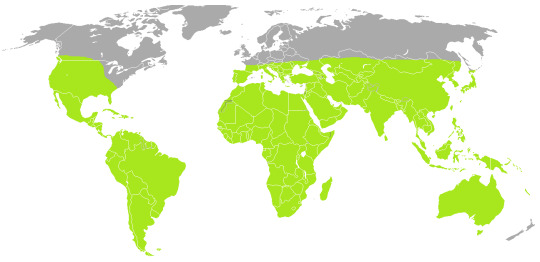
That's Wikipedia's map of the native range of the Scorpiones order, i.e., all scorpion species. You may notice something -- the range just stops at a certain northern latitude. Pretty much all of northern Europe is scorpion-free. If you lived in the north half of Europe, odds were good you had never seen a scorpion in your life. But if you were literate or educated at all, or you knew they were a thing, because you'd almost certainly run across them being mentioned in texts from farther south. And those texts wouldn't bother to explain what a scorpion was, of course -- everyone knows scorpions, right? When was the last time you stopped to explain What Is Spiders?
So medieval writers and artists in northern Europe were kind of stuck. There was all this scorpion imagery and metaphor in the texts they liked to work from, but they didn't really know what a scorpion was. Writers could kind of work around it (there's a lot of "oh, it's a venomous creature, moving on"), but sometimes they felt the need to break it down better. For this, of course, they'd have to refer to a bestiary -- but due to Bestiary Telephone and the persistent need of bestiary authors to turn animals into allegories, one of the only visual details you got on scorpions was that they... had a beautiful face, which they used to distract people in order to sting them.
And look. I'm not here to yuck anyone's yum, but I would say that a scorpion's face has significant aesthetic appeal only for a fairly small segment of the population. I'm sure you could get an entomologist to rhapsodize about it a bit, but your average person on the street will not be entranced by the face of a scorpion. So this did not help the medieval Europeans in figuring out how to depict scorpions. There was also some semantic confusion -- see, in some languages (such as Old and Middle English), "worm" could be a general term for very small animals of any kind. But it also could mean "serpent".* So there were some, like our artist at the top of the post, who were pretty sure a scorpion was a snake. This was probably helped along by the fact that "venomous" was one of the only things everyone knew about them, and hey, snakes are venomous. Also, Pliny the Elder had floated the idea that there were scorpions in Africa that could fly, and at least one author (13th-century monk Bartholomaeus Anglicus) therefore suggested that they had feathers. I don't see that last one coming up much, I just share it because it's funny to me.
*English eventually resolved this by borrowing the Latin vermin for very small animals, using the specialized spelling wyrm for big impressive mythical-type serpents, and sticking with the more specific snake for normal serpents.
Some authors, like the anonymous author of the Ancrene Wisse, therefore suggested that a scorpion was a snake with a woman's face and a stinging tail. (Everyone seemed to be on the same page with regards to the fact that the sting was in the tail, which is in fact probably the most recognizable aspect of scorpions, so good job there.) However, while authors could avoid this problem, visual artists could not. And if you were illustrating a bestiary or a calendar, including a scorpion was not optional. So they had to take a shot at what this thing looked like.
And so, after this way-too-long explanation, the thing you're probably here for: inaccurate medieval drawings of scorpions. (There are of course accurate medieval drawings of scorpions, from artists who lived in the southern part of Europe and/or visited places where scorpions lived; I'm just not showing you those.) And if you find yourself wondering, "how sure are you that that's meant to be a scorpion?" -- all of these are either from bestiaries or from calendars that include zodiac illustrations.
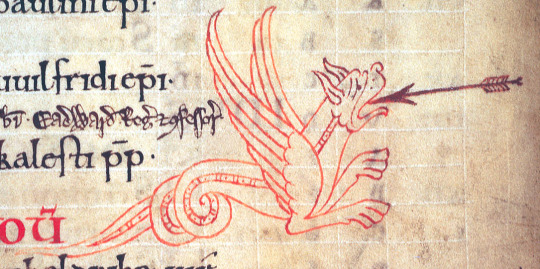
11th-century England, MS Arundel 60. (Be honest, without the rest of this post, if I had asked you to guess what animal this was supposed to be, would you have ever guessed “scorpion”?)
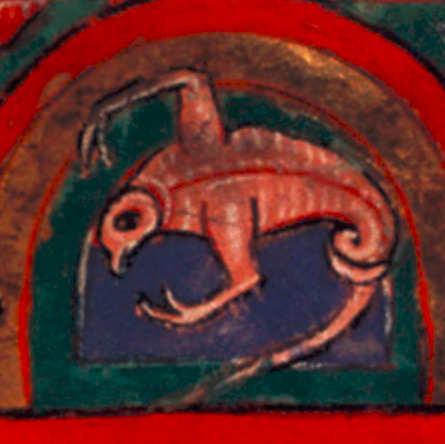
12th-century Germany, "Psalter of Henry the Lion". (Looks a bit undercooked. Kind of fetal.)
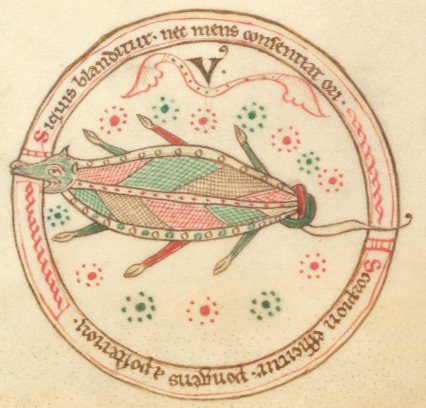
12th-century France, Peter Lombard's Sententiae. (Very colorful, itsy bitsy claws, what is happening with that tail?)
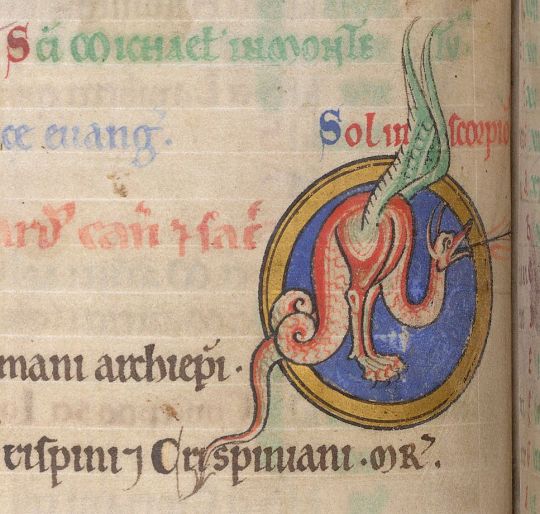
12th-century England, "The Shaftesbury Psalter". (So a scorpion is some sort of wyvern with a face like a duck, correct?)

13th-century France, Thomas de Cantimpré's Liber de natura rerum. (I’d give them credit for the silhouette not being that far off, but there’s a certain bestiary style where all the animals kind of look like that. Also note how few of these have claws.)
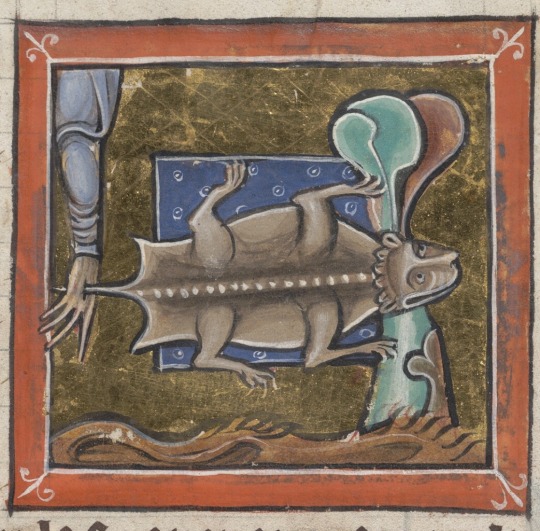
13th-century England, "The Bodley Bestiary". (Mischievous flying squirrel impales local man’s hand, local man fails to notice.)
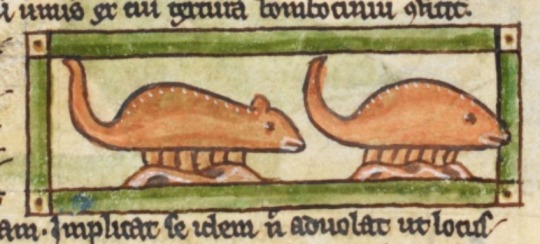
13th-century England, Harley MS 3244. (A scorpion is definitely either a mouse or a fish. Either way it has six legs.)
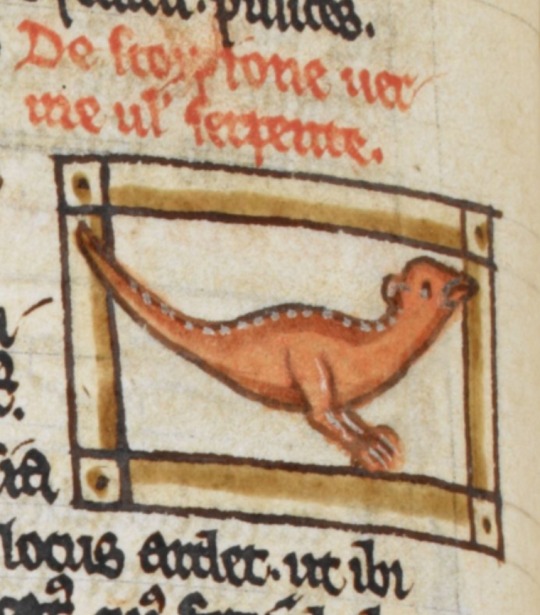
13th-century England, Harley MS 3244. (Wait, no, it’s a baby theropod, and it has two legs. (Yes, this is the same manuscript, that’s not an error, this artist did four scorpions and no two are the same.))

13th-century England, Harley MS 3244. (Actually it’s a lizard with tiny ears and it has four legs.)

13th-century England, Harley MS 3244. (Now that we’re at the big fancy illustration, I think I’ve got it — it’s like that last one, but two legs, longer ears, and a less goofy face. Also I’ve decided it’s not pink anymore, I think that was the main problem.)

13th-century England, MS Kk.4.25. (A scorpion is a flat crocodile with a bear’s head.)
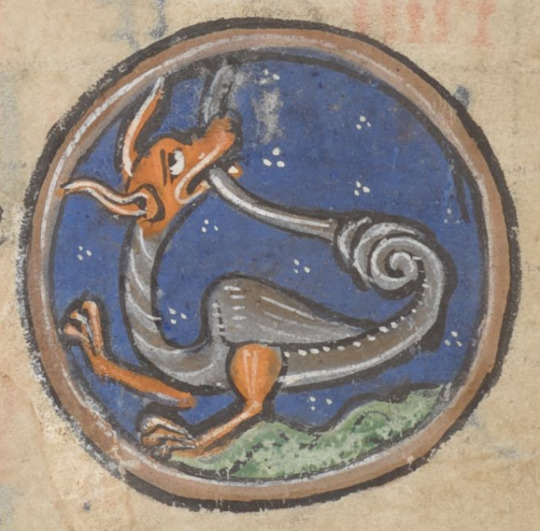
13th-century England, "The Huth Psalter". (Wyvern but baby! Does not seem to be enjoying biting its own tail.)
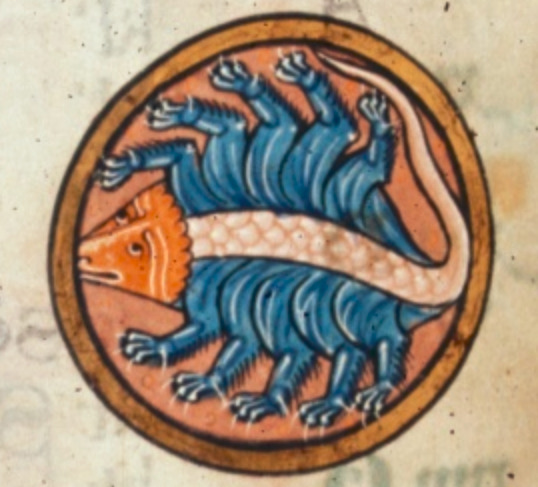
13th-century England, MS Royal 1 D X. (This triangular-headed gentlecreature gets the award for “closest guess at correct limb configuration”. If two of those were claws, I might actually believe this artist had seen a scorpion before, or at least a picture of one.)

13th-century England, "The Westminster Psalter". (A scorpion is the offspring of a wyvern and a fawn.)
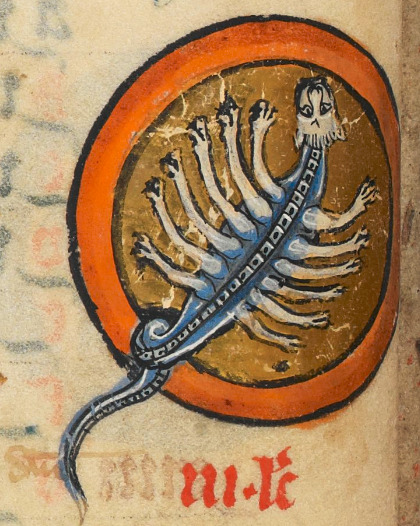
13th-century England, "The Rutland Psalter". (Too many legs! Pull back! Pull back!)

13th or 14th-century France, Bestiaire d'amour rimé. (This is very similar to the fawn-wyvern, but putting it in an actual Scene makes it even more obvious that you’re just guessing.)
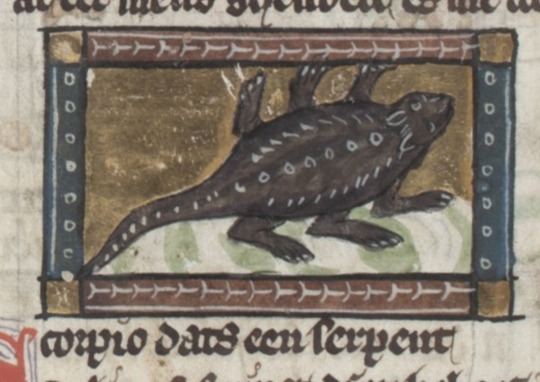
14th-century Netherlands, Jacob van Maerlant's Der Naturen Bloeme. (More top-down six-legged guys that look too furry to be arthropods.)

14th-century Germany, MS Additional 22413. (That is clearly a turtle.)

14th-century France, Matfres Eymengau de Beziers's Breviari d'amor. (Who came up with that head shape and what was their deal?)
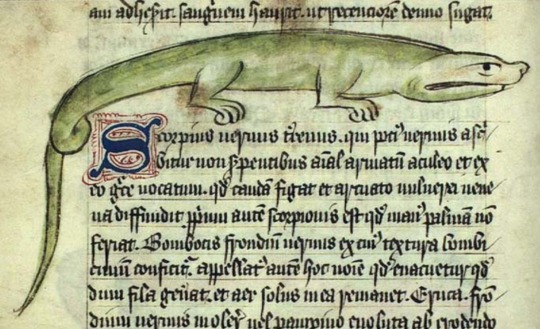
15th-century England, "Bestiary of Ann Walsh". (Screw it, a scorpion is a big lizard that glares at you for trying to make me draw things I don’t know about.)
I've spent way too much time on this now. End of post, thank you to anyone who got all the way down here.
#medieval#medieval creatures#medieval art#scorpions#medieval scorpions#manuscript#medieval manuscripts#illuminated manuscript
6K notes
·
View notes
Text

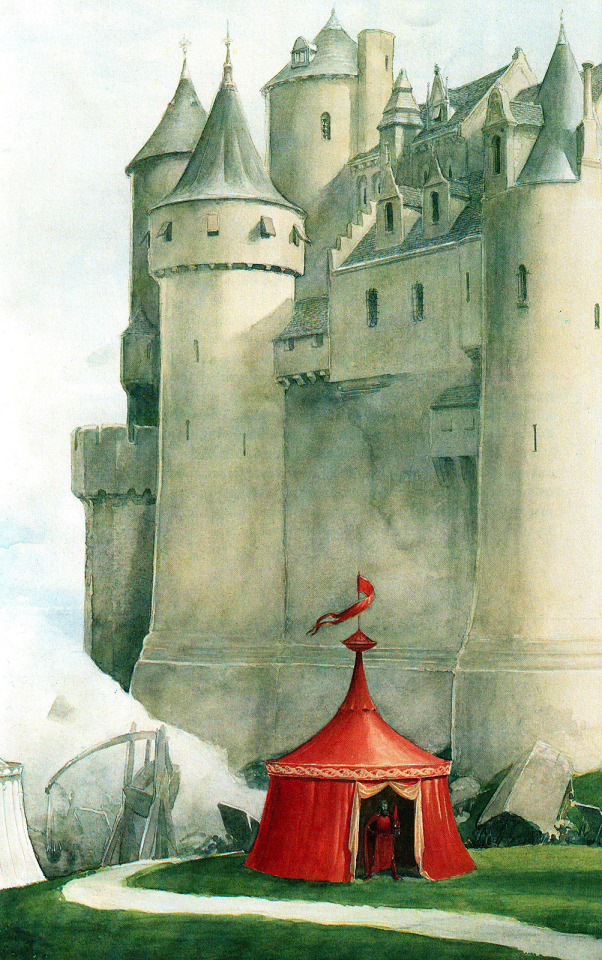








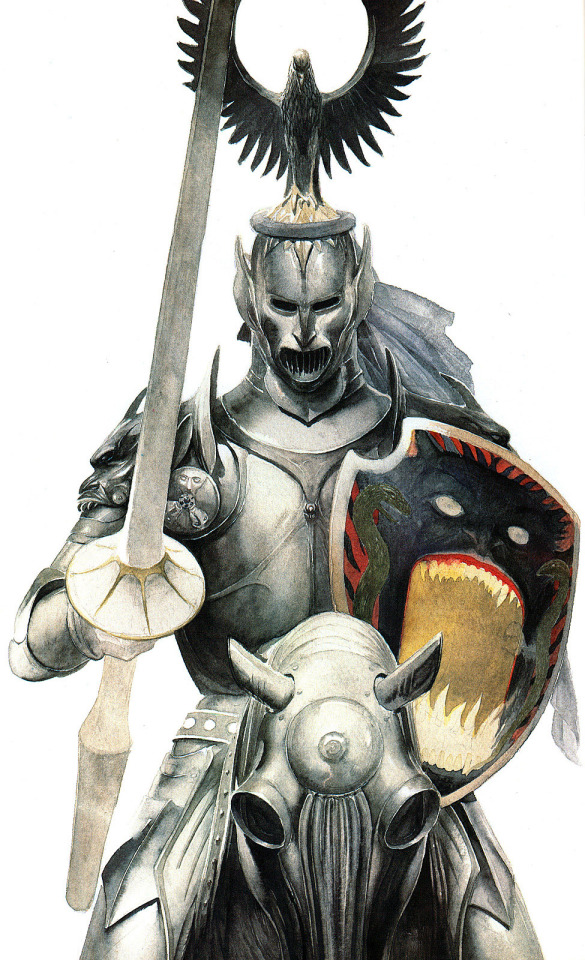

Castles - art by Alan Lee (1984)
#alan lee#castles#80s fantasy art#arthurian legends#fairy tales#gormenghast#medieval art#knights#middle ages#fantasy books#david day#1980s#1984
3K notes
·
View notes
Text
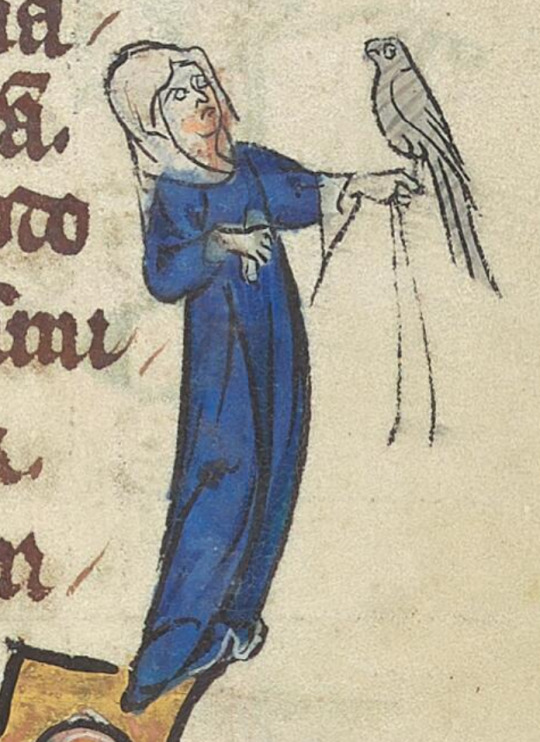
I am deeply enjoying the facial expressions on both woman and bird in this marginal drawing.
(Cambridge UL MS Add. 4085)
3K notes
·
View notes
Text

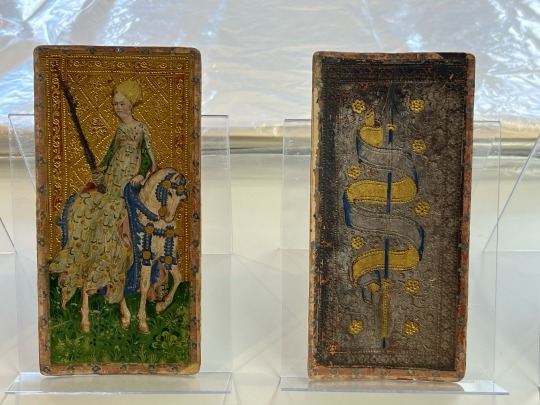
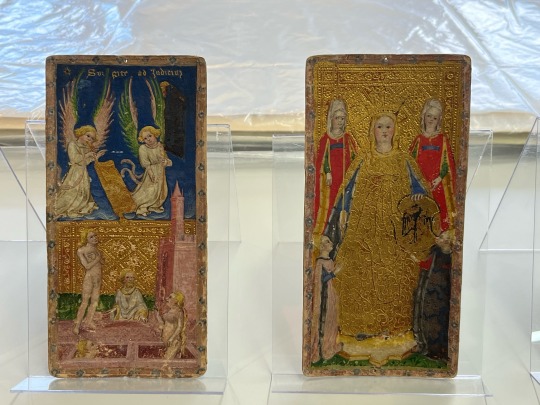

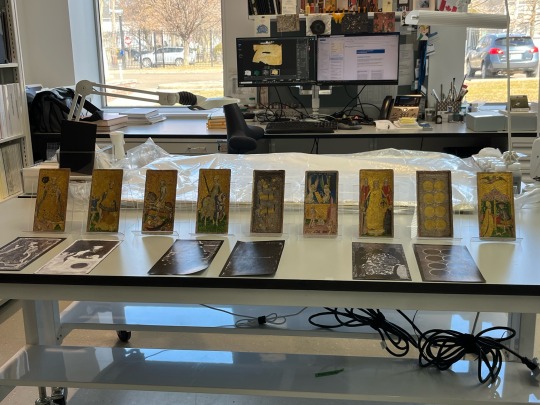
Fifteenth century tarot cards, possibly the oldest known deck. Look how beautiful they are! These are from way back before they were used for cartomancy.
#tarot#tarot cards#divination#cartomancy#tarot history#occult#occultism#medieval#medieval art#early modern
3K notes
·
View notes
Text
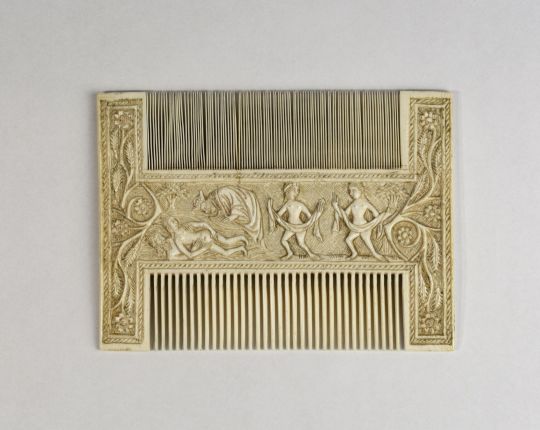
Carved walrus ivory comb with scenes from the life of King David and Bathsheba, France, 15th century
from The Hunt Museum, Limerick
2K notes
·
View notes
Text

4K notes
·
View notes